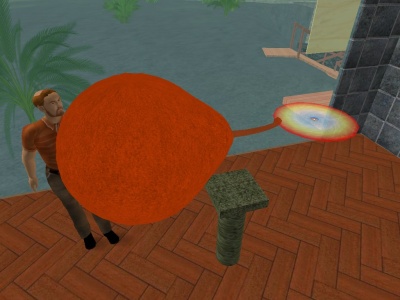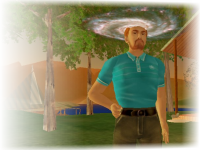Ia Supernovae : colliding white dwarfs, not accreting white dwarfs!
My world has been rocked.
A paper by Gilfanov and Bogdan, and an accompanying press release yesterday from the Chandra Space Telescope, presents results that suggest that the progenitors of Type Ia supernovae are not what most of us have assumed all along. Before I go any further, I want to make it clear that this doesn’t call into question any of the results that have used Type Ia supernovae as standard candles, including the observation that the expansion of the Universe is accelerating. Those results don’t depend on what Ia supernovae are; they depend on the empirically observed fact that the luminosities of the explosions are remarkably consistent. Of course, if we really want to push those observations further, we need to understand the objects better, so that we can deal with outliers and exceptions, but the core results remain robust.
But, of course, as with everything in the Universe, we want to understand it.
I should also say that the model of two colliding white dwarfs— the “double degenerate” model in jargon terms— isn’t completely new. Back when I was with the Supernova Cosmology Project, we admitted that we didn’t really know how these supernovae started, and admitted the possibility of a double-degenerate source, even though I (and I think most other people) personally didn’t expect that to be a substantial contributor to Type Ia supernovae.

The traditional model we always used is show in the picture to the right. Indeed, when I’ve given talks about supernovae, or talks about Supernova Cosmology, I’ve shown this picture (or, in Second Life, the 3D object that I made) as our model for where these supernovae come from. Everybody showed a version of this picture. The idea was that you had a white dwarf star with a companion red giant (or other) star. The orbit of the two was close enough that its gravity could pull some of gas off of the outside of the companion star. That gas would then swirl around the white dwarf in an accretion disk, building up on the white dwarf. The white dwarf would eventually reach a critical mass of about 1.4 times the mass of the sun, and blow itself away in a runaway thermonuclear explosion that we would observe as a Type Ia supernova.
This seemed very reasonable. It’s not too hard to imagine how you’d get these systems. If you have a binary star system where the two stars aren’t the same mass— and we observe lots of those— one would “die” first, leaving behind a white dwarf. The second star would eventually reach its giant stage, puffing up and leaving its outer layers not terribly well gravitationally bound, and the white dwarf would have a relatively easy time pulling mass from it. This is still the model we have for regular novae. (With a regular nova, just the outer layers of the white dwarf explode in a nuclear fusion explosion, not the whole thing.)
But… modeling of these systems predict that they would emit a substantial fraction of X-rays. I don’t know exactly the details, but in brief, the center of the accretion disk gets extremely hot, and thus emits some X-rays. (Doubtless magnetic fields somehow get involved as well, but as I said, I don’t know the details.) What Chandra observed, however, was that there is not enough X-rays coming from galaxies for there to be enough of these accreting systems to explain the Type~Ia supernovae we see.
This leaves us with the conclusion that most Type~Ia supernovae must come from collisions of white dwarfs. (Or, possibly, from something else that we haven’t thought of yet.) And, to me, this is surprising, because I would have expected those collisions to be far rarer and harder to produce than the accreting systems I always thought that Type Ia supernovae came from.
I look forward to seeing more developments as the astrophysics community receives, thinks about, responds to, and does further investigation of this result.
